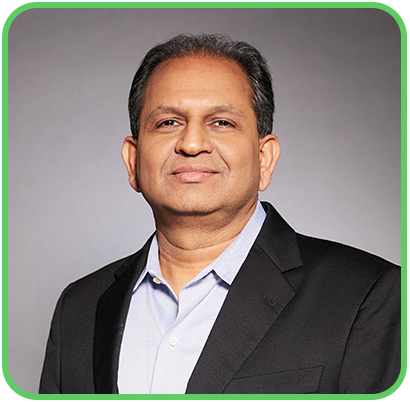A company that provides single-family rental homes across the US
A company that provides single-family rental homes across the US wanted to disrupt the traditional rental industry by using technology to make the process more efficient, convenient, and transparent for their customers, employees, and vendors. Mastek helped them customize and integrate various software tools that would help them achieve their goals.
Mastek’s automation framework has helped the company foster its commitment to responsible and accountable practices, contributing to its long-term sustainability and reputation as a reliable player in the rental industry. A significant reduction in expenses was achieved and the implementation has paved the pathway to help them reduce their environmental footprint by minimizing the need for physical visits and paper-based transactions.
A leading tech-enabled platform specializing in virtual agent services
“The seamless integration has created amnesty between our systems and makes our tech ecosystem a lot stronger.” – Senior Manager of an industry leading virtual agent services company.
An industry leading tech-enabled platform specializing in virtual, flexible agent services were struggling to adequately track operational activities for their agents; most of which was done manually. Mastek’s Salesforce based hub enabled them to get a 360-degree view of client to agent operations.
Leveraging a virtual workforce that boasts a lower carbon footprint, Mastek has provided a cloud-based solution resulting in increased scalability and resource optimization, leading to a more efficient use of computing resources and the potential to reduce carbon emissions associated with data centers. This digitalization and streamlining of processes has led to eliminating all manual activities from reduced paper usage and resource consumption, contributing to environmental sustainability and recapturing up to 6000 work hours per year.
One of UK’s largest parcel delivery network
Mastek has helped one of UK’s largest parcel delivery network to streamline processes and operations across their internal departments which were earlier using disparate systems – therefore, contributing to the company’s efforts to operate in a more sustainable and eco-friendly manner by creating a unified back-end operation with efficient process workflows. Mastek implemented Oracle Cloud-based ERP, EPM, SCM, HCM & UK Payroll solutions.
Mastek realizes that compliance and adherence to regulations are essential for responsible business practices and to ensure a high-in-class solution, Mastek has facilitated the path to achieve high standards of governance practices that promote transparency, accountability, and ethical decision-making within the organization, which can enhance stakeholders’ trust and confidence in the company.
One of the largest public forces in the world
One of the largest public forces in the world was embarking on a digital transformation journey, aiming to be fully digital. Their existing application infrastructure was physically hosted and there were significant security constraints.
By replacing manual processes with digital ones, there’s a decrease in its environmental footprint and energy consumption associated with physical infrastructure. The implementation of a fully automated software delivery pipeline and enhanced monitoring system results in more efficient use of resources, including computing power. This aligns with an environmental focus on reducing resource consumption and emissions.
As a result, the cost savings of $2 million per year in infrastructure costs can be seen as efficient resource allocation and cost management which are important aspects of governance, and these savings enhance the company’s financial sustainability and governance practices.
500+ annual customers for a cement manufacturing company
Mastek has redefined the process flow for a cement manufacturing company, resulting in advanced loading capabilities, the addition of 500+ customers in a year, efficient utilization of resources, and improved turnaround time for its truck drivers by 2x.
The solution improves resource utilization by minimizing the need for manual intervention and optimizing processes, leading to reduced energy consumption, lower waste generation, and a smaller environmental footprint for the cement manufacturing process. It also reduces the likelihood of overloading, which decreases the wear and tear on vehicles and prevents increased fuel consumption. Real-time material tracking helps minimize transportation inefficiencies, leading to reduced fuel consumption and greenhouse gas emissions. Along with the environmental benefits, the system’s automation and real-time tracking enhance customer engagement and satisfaction by providing transparency and real-time updates on material delivery.
Vimal Dangri
Chief Legal and Compliance Officer
Chief Legal and Compliance Officer
Vimal leads the legal, compliance, risk, corporate governance and ESG actions. He is responsible for driving Mastek’s legal strategy on key issues including business & third party engagements, ethical culture & governance, sustainability, intellectual property, privacy and policy priorities. Having experience in the field of process improvements, Vimal is focused on driving innovation in legal & compliance profession.
An alumni of National Law School of India University, Vimal has held leadership roles in legal, governance, compliance, and risk functions in his 21 years of work experience.

Vijay Iyer
President Americas
President Americas
Vijay Iyer is the President of the Americas at Mastek. Spearheading our business strategies, processes, and operations, he is responsible for Mastek’s growth, as well as customer success & experience across the region.
Vijay is an industry veteran with over 30 years of diverse global experience in creating, growing & stabilizing new lines of business across various industry verticals in the Digital Engineering and Enterprise IT Services domain. He began his career as the CIO of SRF, a manufacturing company, and has had successful stints as the Industry Vertical Head at HCL Technologies & DXC Technology, Chief Sales Officer at Hexaware Technologies and CEO of Cignex Datamatics Inc. Before joining Mastek, Vijay was with Persistent Systems. His extensive experience includes strategy development, marketing & sales, organizational development, advisor relationships, leading large deals and delivery execution.
Vijay has done his MS from Birla Institute of Technology and Sciences, Pilani, India, and is an alumnus of the University of Cambridge and the Harvard Business School. He is also passionate about giving back to society and runs a non-profit charitable organization, The Iyer Foundation Inc., focused on enabling children to develop an interest in Science, Technology, Engineering, Arts & Math.

Ritwik Batabyal
CTO & Innovation Officer
CTO & Innovation Officer
Lorem ipsum dolor sit amet, consectetur adipiscing elit. Suspendisse nec tellus et quam convallis efficitur. Nullam consequat, diam ut tempor posuere, orci tortor maximus nibh, at facilisis nunc quam at turpis. Mauris eleifend non orci vitae pharetra. Aenean mauris ipsum, consequat vel dui condimentum, gravida placerat elit. In hendrerit semper suscipit. Fusce nec elit arcu. Donec et tortor in nulla aliquam vestibulum. Praesent consequat quam neque, eu hendrerit dui malesuada nec. Maecenas quis lectus in ante rhoncus consectetur. Nullam eget finibus risus. Quisque luctus dui et augue fringilla dignissim.

Raman Sapra
President & Chief Growth Officer
President & Chief Growth Officer
Raman Sapra is the President and Chief Growth Officer of Mastek. He is responsible for driving the growth agenda of Mastek on a global basis by scaling our Global Service Line capabilities, driving strategic engagement with our Technology Partners and executing our inorganic priorities.
An IIT Roorkee graduate – Raman has more than 25 years of experience in the IT Services Industry across companies such as Wipro, Dell Services and Sasken. Prior to this role, Raman was the President of Mastek Americas.

Prameela Kalive
Chief Operating Officer
Chief Operating Officer
Prameela Kalive is the Chief Operating Officer (COO) at Mastek. As part of the Executive Leadership Team, she spearheads global delivery and operational excellence and leads cross-functional groups that include the order-to-cash processes and CIO functions.
Being the First Woman COO of the Indian IT Industry and a strong advocate of the ‘Customer First’ mindset, Prameela has over three decades of industry experience spanning multiple global portfolios including Software Delivery, Sales, Marketing, Strategy, Innovation, HR and Practice Development. Interestingly, she started her career as a Missile Scientist with the DRDO and was part of the esteemed AGNI and AKAASH Missile Development teams where she worked under the leadership of honourable Dr APJ Abdul Kalam. Before joining Mastek, she was the COO at Zensar Technologies and was an integral part of Zensar’s growth story for the past 22 years.
Prameela holds Masters Degrees in Digital Engineering and Business Administration and is an alumnus of Osmania University, the London School of Economics and the Indian School of Business.

Prajakta Talvelkar
Chief Marketing Officer
Chief Marketing Officer
Lorem ipsum dolor sit amet, consectetur adipiscing elit. Suspendisse nec tellus et quam convallis efficitur. Nullam consequat, diam ut tempor posuere, orci tortor maximus nibh, at facilisis nunc quam at turpis. Mauris eleifend non orci vitae pharetra. Aenean mauris ipsum, consequat vel dui condimentum, gravida placerat elit. In hendrerit semper suscipit. Fusce nec elit arcu. Donec et tortor in nulla aliquam vestibulum. Praesent consequat quam neque, eu hendrerit dui malesuada nec. Maecenas quis lectus in ante rhoncus consectetur. Nullam eget finibus risus. Quisque luctus dui et augue fringilla dignissim.

Arun Agarwal
Global Chief Financial Officer
Global Chief Financial Officer
As Global Chief Financial Officer, Arun oversees multiple functions globally including Finance, Investor Relationships, Facilities and Infrastructure. He has over 19 years of experience as a Chartered Accountant and previously held senior leadership roles at Firstsource, GE, Wipro and Synovate.

Abhishek Singh
President UKI & Europe
President UKI & Europe
As President, UK business, Abhishek oversees full P&L of the UK business. His major focus is driving continued improvement in financial and operational performance whilst enhancing employee and customer satisfaction levels.
He has two decades of experience in the Information Technology, Healthcare, Financial Services and BPM industries across both India and the United States, including organisations like First Source Solutions and Tech Mahindra (then Mahindra-British Telecom).

Hiral Chandrana
CEO, Mastek Group
Mr Hiral Chandrana is the CEO of Mastek Group. He is responsible for the global P&L and strategy of the organization in addition growth, customer success and employee experience.
Hiral has over 25+ years of global experience with a proven track record in IT Services and Digital Solutions across a diverse set of industries. He has worked with Wipro Limited, Electronic Data Systems in progressive business leadership roles. In his last role during a 14-year stint at Wipro, he served as the Senior Vice President & Global Head, where he transformed the $3B Applications business to Digital; in addition to driving strategic cloud partnerships and M&A’s. He also has extensive expertise in Consumer, Retail, Manufacturing, and Healthcare related industries and working with Fortune 1000 global clients across US, UK, Europe, Middle East, and Asia Pacific.
Hiral has an engineering background with an MS and MBA from US. He has attended various executive leadership programs at Wharton, Duke University, and Berkeley.

